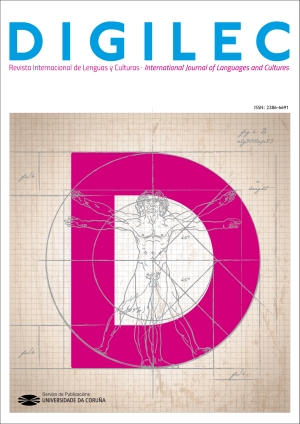The Female Characters in Madame d'Aulnoy’s Fairy Tales: An Analysis of "Cunning Cinders" and "Yellow Dwarf"
Main Article Content
Abstract
This article presents an analysis of the work of Madame d’Aulnoy, the first European writer of children’s literature and the true forerunner of fairy tales. In order to do so, this article has as its starting point the indispensable role of the feminist literary criticism, before moving on to a literature review on Madame d’Aulnoy and the subsequent analysis of two of her most significant stories. With all this, it’s intended to regain the figure of the first woman who wrote fairy tales in a patriarchal society that has invisibilized the women writers of a generation.
Keywords:
Downloads
Article Details
References
Aulnoy, M. d’ (1992). El cuarto de las hadas. Madrid: Siruela.
Blanco Corujo, O. (2014). “Nunca te fíes del tío Perrault”. ARENAL, 21(2), 257-269.
Bottigheimer, R. B. (2009). Fairy Tales. A New History. New York: State University of New York Press.
Callow, H.; Duggan, A. E. & Haase, D. (eds.) (2016). Folktales and Fairy Tales: Traditions and Texts from around the World, Revised and Expanded. Santa Bárbara: ABC-CLIO.
Duggan, A. E. (2005). Salonnières, Furies, and Fairies: The Politics of Gender and Cultural Change in Absolutist France. Newark: University of Delaware Press.
Harries, E. W. (2003). Twice Upon a Time: Women Writers and the History of the Fairy Tale. Princeton: Princeton University Press.
Neemann, H. (1999). Piercing the Magic Veil: Toward a Theory of the Conte. Tübingen: Gunter Narr.
Passani, F. (5 de mayo de 2006). ‘El cuarto de las hadas’, por Madame d’Aulnoy [Entrada de blog], http://goo.gl/CMxR7t [Recuperado el 29/06/2017]
Prat Ferrer, J. J. (2008). Bajo el árbol del paraíso: historia de los estudios sobre el folclore y sus paradigmas. Madrid: Editorial CSIC.
Ramón Díaz, C. (2001). “Las hadas modernas en el cuento clásico francés”. Thélème. Revista Complutense de Estudios Franceses, 16, 95-107.
Ramón Díaz, C. (2005). “Les aventures de Finette: un cuento para una princesa”. Anales de filología francesa, 13, 323-337.
Raynard, S. (2012). The Teller’s Tale: Lives of the Classic Fairy Tale Writers. New York: State University of New York.
Setién, M. L. y Silvestre, M. (Eds.). (2003). Problemas de las mujeres, problemas de la sociedad. Bilbao: Universidad de Deusto.
Uther, H. (2004). The Types of International Folktales: A Classification and Bibliography, Based on the System of Antti Aarne and Stith Thompson. Helsinki: Academia Scientiarum Fennica.
Vázquez García, C. (eds.) (2010). Diálogos intertextuales 3: En busca de la voz femenina. Temas de género en la literatura infantil y juvenil de la Península Ibérica y Latinoamérica. Fráncfort del Meno: Peter Lang.
Vicens Pujol, C. (2014). “Recepción de Madame d’Aulnoy en España: traducciones y prólogos”. Çédille, revista de estudios franceses, 10, 367-383.
Winn, C. H. y Kuizenga, D. (1997). Women Writers in Pre-Revolutionary France: Strategies of Emancipation. New York: Garland Publishing.
Zipes, J. (2013). Fairy Tale as Myth/ Myth as Fairy Tale. Kentucky: University Press of Kentucky.
Zipes, J. (2014). El irresistible cuento de hadas: historia cultural y social de un género. Buenos Aires: Fondo de Cultura Económica de Argentina.

